Can QLED and mini-LED TVs get burn-in? How can you solve the problem of not getting HDR from the YouTube app on Apple TV 4K? Speaking of Apple TV 4K, does it benefit from HDMI 2.1? And is using a computer monitor instead of a smart TV a good way to avoid privacy issues?
Apple TV and HDMI 2.1
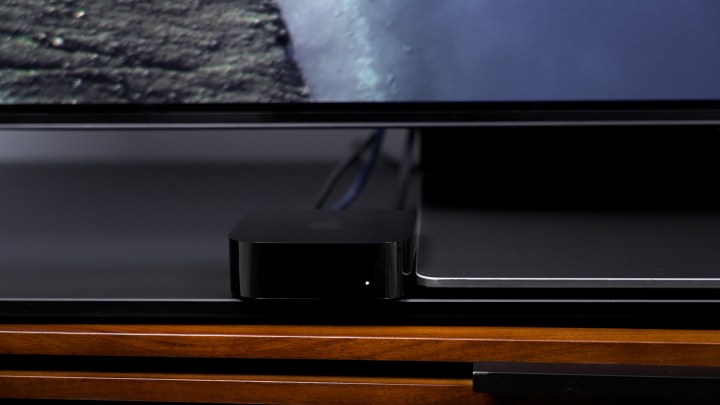
Tom Sampson writes: Is there any benefit to using my Apple TV 4K in a 2.1 HDMI port versus 2.0?
No. There is no benefit to using an HDMI 2.1 port for an Apple TV 4K. The only consumer hardware I’m aware of that benefits from the bandwidth afforded by HDMI 2.1 ports are the Xbox Series X, PlayStation 5, and high-end PCs pushing 4K 120Hz video signals or 8K 60Hz video signals.
Dolby Atmos without surround

Andrew Lopez writes: My wife and I watch most of our movies in bed in our bedroom. We have a JBL 2.1 soundbar with a subwoofer, but I’ve always dreamt of a more immersive sound experience. I don’t think rear surrounds would work because our headboard is already against the wall. Any way to get around this, or should I just go for a soundbar like the Sonos Arc with virtual Dolby Atmos?
I also have a bedroom in which the headboard is up against the wall opposite of the TV. And I know a lot of you question whether surround speakers will do anything good for you if, say, your couch is up against a wall. So here’s my take on that.
While you will not get all of the benefits of properly placed and spaced surround speakers — relative to your listening position — when your back’s up against the wall, you can still get some benefit from having surround speakers on your bedside table. You get a little bit of side fill, and if you can place them even further out to the side — say, 4 feet from each head as one sits on the bed or couch — then you won’t have to turn them down quite as much to keep them from seeming like they are right next to your head. But even on a bedside table or nightstand, I was able to dial down my surround speakers so they enhanced the overall sound field without being a distraction. I definitely prefer having them to not having them.
Again, you aren’t getting the full, intended, or best surround or Atmos effect. But you are getting a little something, and I prefer having it to not having it.
With all that said, you can often save yourself some money by forgoing the surround speakers and instead getting a soundbar with upfiring drivers and side-firing drivers, which can provide some decent virtual surround and reflected surround effects. The Sonos Arc is a great example of such a soundbar. But there are others out there. The key is in the numbers. As an example, remember the first number in, let’s say, a 5.1.2 system. The first number represents the main channels, the second number represents the subwoofer, and the third number refers to the Atmos or height effect channels. So what you want to look for is a 3.1.2, 5.1.2, 7.1.2, or even 9.1.2 system. Look for those descriptions on a soundbar that does not include surround speakers, and that will be an indication that it supports Atmos from the soundbar itself.
HDR is missing on the YouTube app
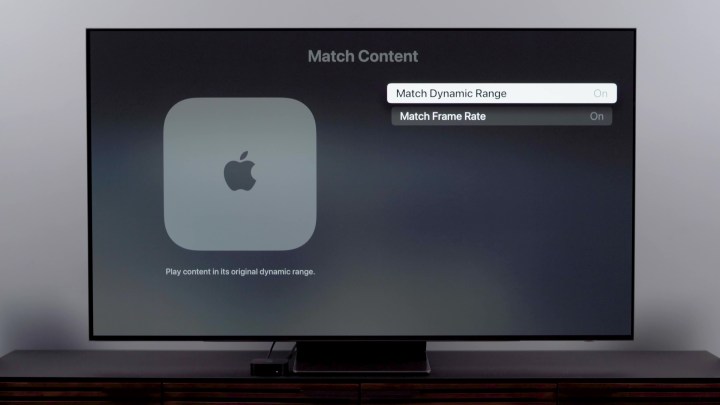
Dustin Stacey writes: My question is about YouTube HDR. If I play it through my Apple TV, it doesn’t play in HDR. So would it look better if I played it through the TV app that does play the HDR? Not sure if the compression of YouTube will make it so that it doesn’t matter either way.
There is no reason you should not be getting HDR from the YouTube app on your Apple TV 4K. If you are 100% sure the content you are watching is in HDR — don’t just trust the title of the video, sometimes those lie — then my best guess is that there is a setting amiss in your Apple TV. I am curious whether you’re getting HDR from other streaming apps, though. Sounds like you’re just having a problem with YouTube.
Anyway, try going to Settings > Video and Audio > Match Content > Match Dynamic Range: Turn that on to have Apple TV 4K match its output to whatever the dynamic range of the content you’re watching happens to be. If you still don’t get HDR from a video you know for sure is in HDR, then the problem resides elsewhere. But that is not a problem inherent to the Apple TV 4K.
Computer monitor vs. smart TV for privacy

Gary Eichelberger writes: I read that it is possible to buy a computer monitor instead of a smart TV if one is using a streaming device or PC as the server for content. Is this feasible? Not a lot of large screens are available this way, but there are a few in the 40-inch plus range last I looked. They cost more than the smart TVs (which are now unbelievably cheap), but the monitor I saw on Amazon still costs less than the plasma TV I got a decade ago. I frankly just don’t really trust that disabling the smart features really prevents data collection.
I did this for a while. I used a KTC OLED monitor with a Chromecast with Google TV connected to it, and it did work. The issue with monitors is that they don’t have picture processing in them. Maybe that’s not an issue if you’re using a PC, where image processing is taken care of by whatever GPU you have in that machine. But streaming boxes and sticks don’t have much in the way of picture processing — they rely on a TV to do that job — and you might find that not everything you watch looks all that great because you have a monitor that isn’t trying to clean up any noise or other artifacts. It’s also not upscaling (unless you’re using an Nvidia Shield, which does its own upscaling) and most monitor speakers are terrible if they even have them — even worse than crappy TV speakers, so you’re probably looking at having to get some kind of audio solution.
But here’s the thing: There’s not much difference between using Android TV, Google TV, Roku, or Fire TV systems, whether they are built into a TV or an external device. Same streaming OS, same privacy concerns. So, maybe you get better privacy using a PC if you’ve got it locked down really well, but any other streaming box or stick will come with the same privacy concerns as if that platform were built into the smart TV. The only exceptions are Samsung’s Tizen and LG’s webOS, which are available only in streaming box or stick form.
Sonos Era 300 upgrade

Darink 24 wonders: I currently have the Sonos Arc, the Sub, and two Sonos Ones in the back of the living room for surround effect. Would it be worth it to replace my Ones with two Era 300’s? If so, why?
So, I don’t know if it would be “worth it” to you. I can say that I would absolutely make that upgrade, and the reason why is that the Atmos effects and overall Atmos enhancement that you would get from a pair of Era 300s is going to represent a significant improvement in your system sound. At least, I think it is a significant improvement. That presumes you don’t have them on a bookshelf where the upfiring drivers can’t do their job. But yeah, I would 100% do that upgrade when it is financially feasible.
Mini-LED burn-in
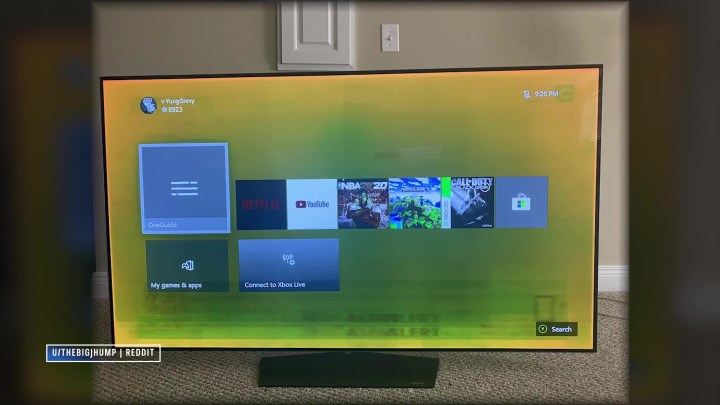
DJTeknovibe aks: Can you get burn-in on QLED and mini LED TVs?
Let’s first recognize that LED, QLED, and mini-LED are all different types of LCD TVs. They all have LCD panels in them.
To answer the question properly, I will have to get a bit pedantic. LCD TVs are not susceptible to “burn-in” by the commonly accepted definition of the term.
Burn-in is a term that was coined back in the CRT TV days when cathode ray tube displays were used for computer monitors, video arcade consoles, and even commercial displays. What happened was that the phosphors coating the back of the TV glass were burnt up by the cathode ray tube in the TV, causing a ” burned-in” image.
That term carried through to plasma TVs and now OLED TVs. Technically, it is an inaccurate description of what is taking place. When plasma and OLED TVs get a burned-in image, it’s because the phosphorescent gas in plasma or the organic compounds in OLED in certain parts of the screen wear out faster than in surrounding areas. So, it’s more like “burn-out,” really.
You can think of an LCD cell as a little lens that lets light through when it’s open and shuts off light when it is closed. It can’t really burn in. It can get stuck, but that’s a different issue. Anyway, you can’t burn the CNN logo on your LCD TV. However, the longer and harder you drive an LCD TV, the more the LCD cells and other parts of the TV will wear out. You may start seeing some vignetting around the edges and corners of the TV. You may see the image on the TV getting dull after a ridiculous number of hours of use. But you will not get “burn-in”
Vision Pro audio
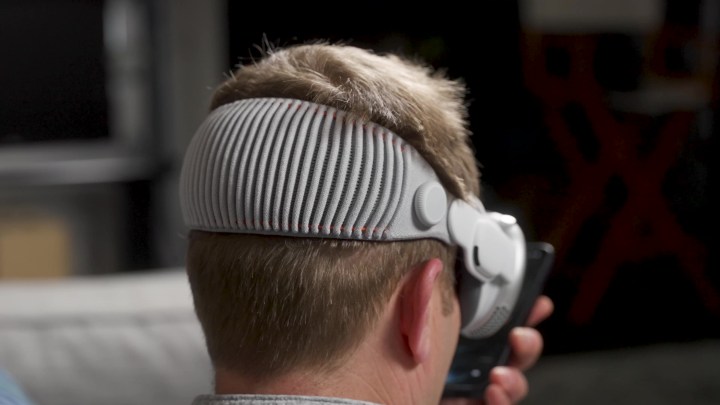
Joe S wants to know: Is it safe to assume that the Vision Pro with AirPods Pro used for audi, is not going to be able to give you that seat-rumbling, high-pressure punch-in-the-chest feeling that you can get from a proper speaker-based audio system with high-quality subwoofers.
Yes, that is true. Earbuds and even headphones can’t hit you in the chest with sound. You need to move a lot of air for that concussive effect. You will get a sense of fairly deep bass and impact when you listen to headphones and the AirPods Pro — they’re OK for bass, I suppose. But you need large diaphragms moving air all around you to really feel it.
I would love to see some way to incorporate bass transducers — sometimes called bass shakers — to give the Vision Pro experience a little more visceral effect. But even then, it’s still not the same as having subwoofers that shake you and the things around you.
Signal splitting
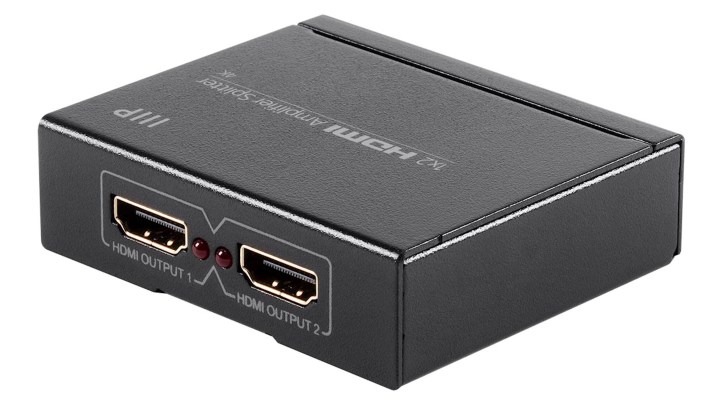
Brad Hornick asks: I have two 4K OLED TVs that I would like to split an HDMI source signal (satellite receiver) with. One TV requires a 6-foot cable to the source, and the other a 30-foot cable to the source. Any recommendations on a splitter and a 30-foot cable solution?
I would get the Monoprice Blackbird 4K 1 by 2 amplifier splitter for $20 and then get yourself some high-quality HDMI cables. Monoprice happens to sell those, too. With the amplified splitter, you can probably get away without using an active HDMI cable. But if you have trouble with signal drop out at that more distant TV, even with the amplified splitter, spring for an active fiber optic HDMI cable. They are a bit more pricey, but it will do the job even beyond 30 feet.
Editors' Recommendations
- You Asked: HDMI 2.1 and Blu-ray, TV life spans, and 2023 TV price drops
- You Asked: Samsung QD-OLED conundrum, ATSC 3.0, and audio outputs
- You Asked: best streaming device for image quality, plus frame rate control and more
- You Asked: best TVs for bright rooms, when to use eARC, and more
- I was wrong. Apple TV 4K is the best streamer you can buy





